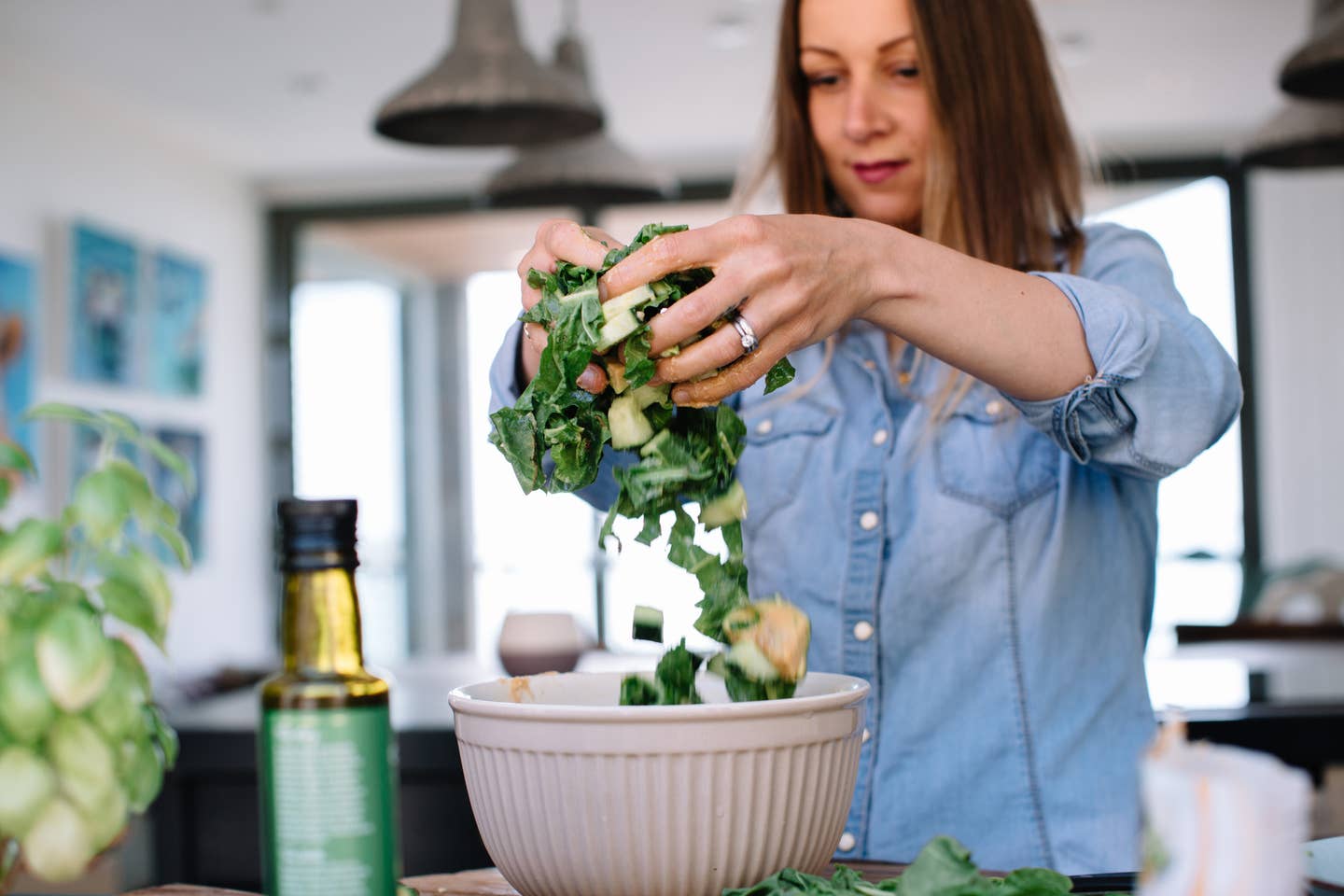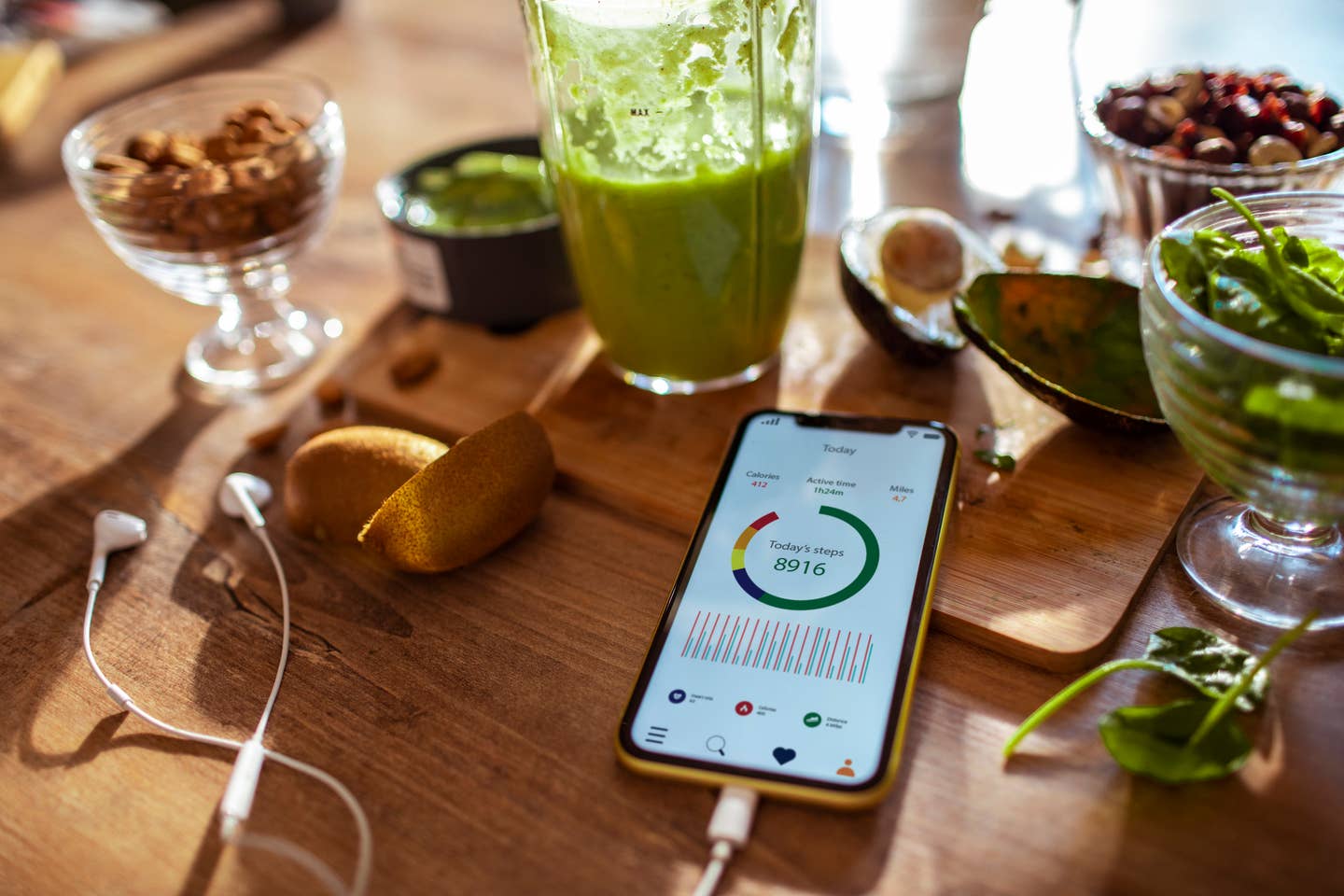
Try this Detox to Feel Calm and Energetic as the Seasons Change
When I was living in New York at the beginning of this decade, juice cleanses were all the rage. But no matter how great they said I would feel after, I always felt hungry and depleted. Sure, I had that nervous energy they’d promised, but it was an anxious energy. I never felt steady and stable. I also didn’t know about the Ayurvedic approach to eating at the time.
Ayurveda is the sister science to yoga, and literally translated means: “The science of life.” Its foundation lies in adapting our lifestyles to be in sync with Mother Nature. Ayurveda thinking asserts that the microcosm is a reflection of the macrocosm: our human bodies are merely a reflection of the greater elements of the Earth. When nature transitions to fall, so should we.
One of the most drastic season changes we experience is summer to fall, especially with climate change. It’s not unusual to see an 80* temperatures one afternoon and a morning frost the next. These months can be unpredictable. In California, fall means fire season, which creates a lot of stress and anxiety. Other parts of the country are subject to wild fluctuations in temperature as well as unstable weather patterns.
The best thing we can do to balance ourselves and temper these transitions is to ground ourselves. We can eat, exercise and create daily rituals to center us and create more stability in our bodies and minds.
A traditional Ayurvedic cleanse does not insist that you drink only water or juices. In fact, according to my favorite Ayurvedic cookbook, Eat-Taste-Heal: An Ayurvedic Cookbook for Modern Living by Thomas Yarema, abstaining from food or water for extended periods of time depletes bodily tissues, leading to imbalance. Instead, Ayurveda asks that you nourish yourself, not only with your food choices but with your daily habits.
One of the staples of an Ayurvedic cleanse is a dish known as Kitchari. It's a simple, easy to prepare dish consisting of spices, basmati rice, and mung dhal. Kitchari is easy to digest and nourishing for all systems of the body. (See the recipe below.) It is a balanced meal comprised of complex carbohydrates, plant proteins, and little fat. You can try a Kitchari-mono-diet for two to three days to begin with, which will cleanse your body of toxins but leave you with enough energy to still work out and feel full. If you feel sustained and not depleted from this, you could extend the cleanse a few more days. This is not about weight loss or punishing yourself for a weekend of too many holiday sweets. Just the opposite – this is about genuinely nurturing yourself physically, mentally, emotionally and spiritually.
Whenever I do a cleanse or even just commit to a simpler way of eating, I notice how much more time I have on my hands. I can redirect the massive amount of brainpower I typically use to contemplate my food choices throughout the day. Those of us who are concerned about what we put in our body or are following a restrictive diet become prone to analyzing our meals ad nauseam.
Giving ourselves some boundaries and sticking to a "mono-diet" of one type of healthy meal like Kitchari for a few days simplifies our decisions, and can help us become more aware of our thoughts around food. We have more time to tune into our internal compass. This space may be uncomfortable, at first leading us to reach for our phone or the TV remote control. Instead, I recommend using the time to fill your creative well. Take the time to do what you have been craving: Write, even in your journal, draw, paint, craft, or start a meditation practice.
This time of year the light is gorgeous: Go for a walk in nature. the more active you are the easier the transition between the seasons can be on your body. Try a dance class or do something outside of your normal routine.
Be kind to yourself. Take a long bath with essential oils (my favorite are from Floracoepia – try a lavender and tea tree oil combo with Epsom salts.) and light some candles. Use this time to get quiet and hear what your body is telling you. Heed nature’s direction and go to bed earlier, since just as we changed the clocks. Change your own personal habits to match. Wake up with the sunrise. Follow the rhythms of Mother Nature, and you will find more balance and ease within yourself.
Kitchari
This is a fairly traditional Kitchari recipe used for cleansing or when you feel the desire to simplify your diet.
Ingredients
| 1 | cup basmati rice | 1 | teaspoon ground cumin |
|---|---|---|---|
| 1 | cup split yellow mung dhal | 1 | teaspoon ground coriander |
| 6 | cups of filtered water | 1 | teaspoon salt |
| 1 | tablespoon coconut oil | 1 | teaspoon black pepper |
Instructions
1 | Soak and the mung dhal for 1 to 2 hours |
|---|---|
2 | Thoroughly rinse the rice and mung dhal until the water runs clear and not cloudy |
3 | Melt the coconut oil on medium-high in a saucepan |
4 | Add the cumin and coriander until the spices become fragrant (cooking spices in oil helps release their healing properties) |
5 | Add the rice and dhal and stir to coat with the oil mixture |
6 | Add water and bring to a boil for five minutes, uncovered stirring occasionally |
7 | Reduce the heat to low and cover, leaving the lid slightly ajar. Cook until all liquid is absorbed, about 25-30 minutes. |
This should make about 2-3 servings. You can usually find split yellow mung dhal in bulk in a health food store or online. Store any extra in a glass container in the fridge for no more than 2 days. Ayurveda cooking does not recommend eating lots of leftovers, as the vitality and nutrition of the food are decreased the older it gets.
Also, you can ‘jazz’ up a basic Kitchari if you’re not doing a strict fast, but simply looking for an easy meal. Often I’ll sauté a small cup of onions and add carrots and parsnips or sweet potatoes which I add to the rice and dhal, but otherwise, continue with the recipe as is. Sometimes, I throw in kale and coconut milk towards the end of the cooking process for a more indulgent stew. You can also add different spices. If you look up ‘Kitchari’ online you’ll find a bunch of variations, so have fun and enjoy this nourishing cleanse your way!
More From The Beet






